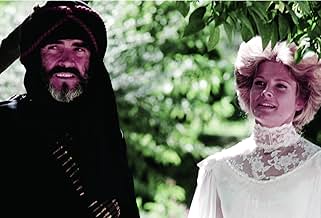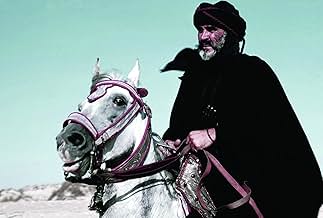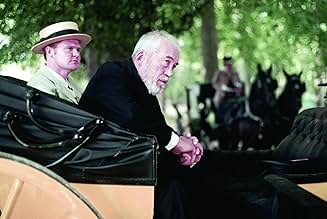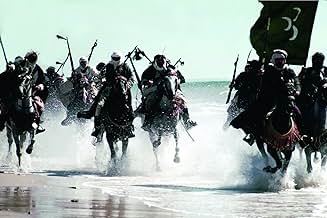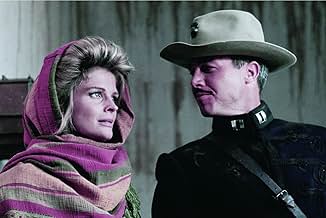A Berber chieftain triggers an international incident, drawing the involvement of Theodore Roosevelt, when he kidnaps an American widow and her children in 1900s Morocco.A Berber chieftain triggers an international incident, drawing the involvement of Theodore Roosevelt, when he kidnaps an American widow and her children in 1900s Morocco.A Berber chieftain triggers an international incident, drawing the involvement of Theodore Roosevelt, when he kidnaps an American widow and her children in 1900s Morocco.
- Nominated for 2 Oscars
- 6 nominations total
- Von Roerkel
- (as Antoine St. John)
- Director
- Writer
- All cast & crew
- Production, box office & more at IMDbPro
America's projection of power under Teddy Roosevelt is the backdrop for this conventional tale of the kidnapped damsel who, despite her gentility, is smitten by the rough, manly nobility of her captor, who in turn is disarmed by her beauty and scorn. (Politically correct prigs eager to see some slight of "native" peoples or cultures can rest assured, that the way Arabs and Muslims are depicted here is far more flattering than the way their modern counterparts depict themselves on the current world stage.) What makes this story different are the terrific production values - faultless photography, composition and editing - the terrific casting - the underappreciated Brian Keith playing a bully Teddy - and vivid history.
Though The Wind and the Lion is told largely through the eyes of the son, every member of the family can identify with one of the characters, whether it be Sean Connery's noble brigand, Candace Bergen's feisty heroine, John Huston's wily John Hay or Steve Kanaly's spiffy, radiant, ruthless can-do lieutenant, Roosevelt's "Big Stick". There is a transcendent scene at the end, when the little boy is symbolically swept away by the dashing Moor on his white steed. This is high adventure at its best.
- jacksflicks
- Jun 23, 2003
- Permalink
Storyline
Did you know
- TriviaThe story was based on a historical incident involving the kidnapping of Ion Perdicaris, an American expatriate living in Tangier (changed to a woman for the movie). However, the two children, the American attack on the Bashaw's palace in Tangier, and the climactic battle between the American and German forces, were all inventions of writer and director John Milius.
- GoofsThe Raisouli and his followers pray while the muezzin is calling. In fact, the actual praying is done after the muezzin finishes - it's his job to remind the faithful to go pray. This is a common mistake in Hollywood productions, possibly done for dramatic purposes.
- Quotes
Raisuli: To Theodore Roosevelt - you are like the Wind and I like the Lion. You form the Tempest. The sand stings my eyes and the Ground is parched. I roar in defiance but you do not hear. But between us there is a difference. I, like the lion, must remain in my place. While you like the wind will never know yours. - Mulay Hamid El Raisuli, Lord of the Riff, Sultan to the Berbers, Last of the Barbary Pirates.
- Crazy creditsOpening credits prologue: Tangier October 15, 1904 1:00 pm
- ConnectionsFeatured in The Lion Roars Again (1975)
- SoundtracksFor He's A Jolly Good Fellow
(uncredited)
Traditional
Sung at Roosevelt's birthday party
- How long is The Wind and the Lion?Powered by Alexa
Details
- Release date
- Country of origin
- Languages
- Also known as
- John Milius' The Wind and the Lion
- Filming locations
- Production companies
- See more company credits at IMDbPro
Box office
- Budget
- $4,000,000 (estimated)
- Runtime1 hour 59 minutes
- Color
- Aspect ratio
- 2.35 : 1
Contribute to this page
















